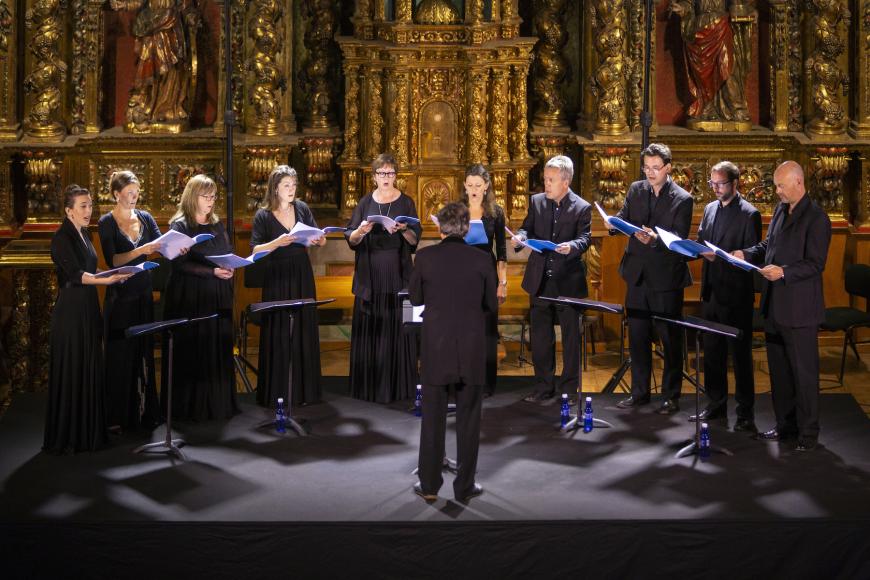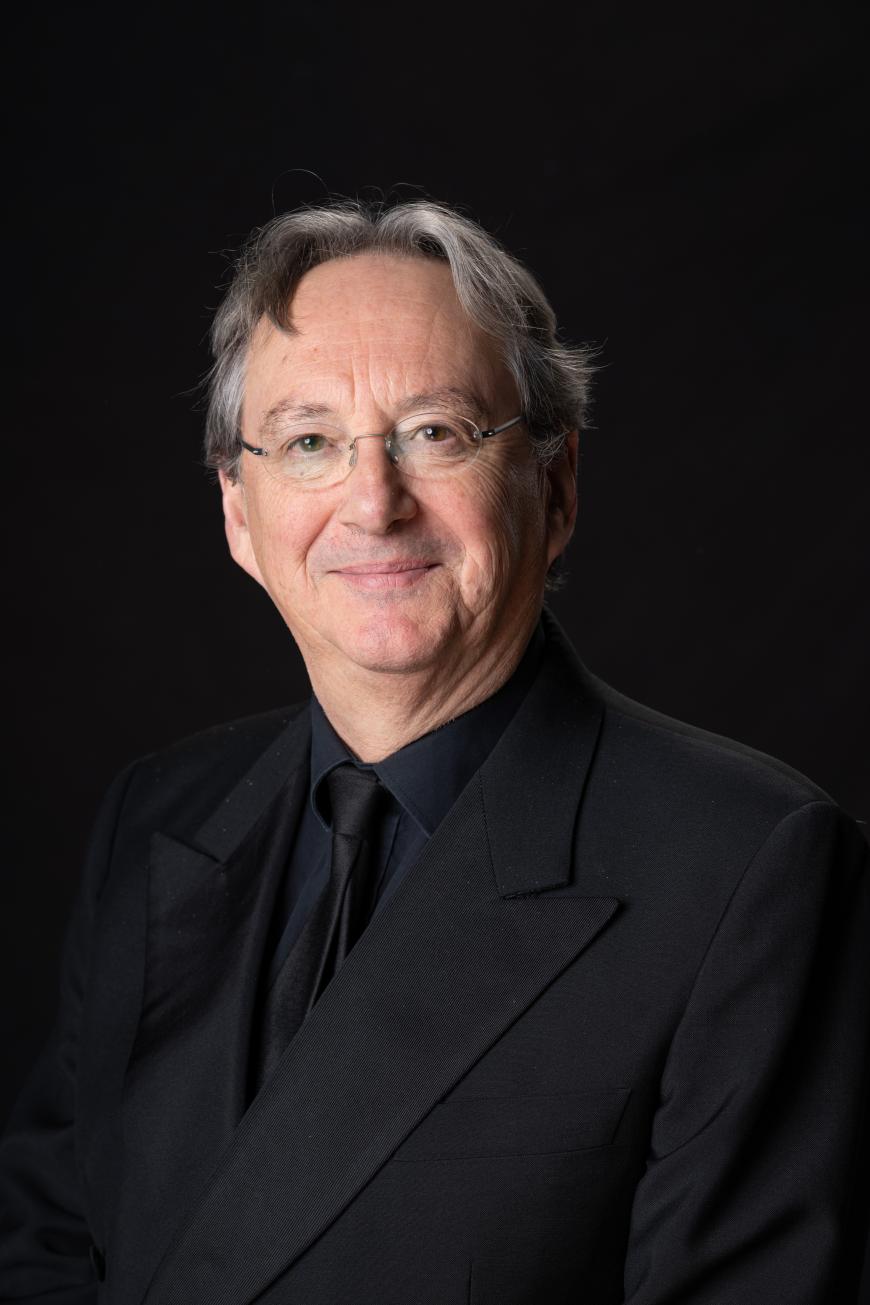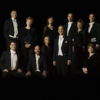
You couldn’t escape the sense of tradition at The Tallis Scholars’ Berkeley show on Thursday, celebrating the group’s 50th anniversary. The concert at First Congregational Church, sponsored by Cal Performances, was founder and director Peter Phillips’s choice of meaningful pieces from The Tallis Scholars’ repertoire, illustrating the choir’s history.

But it was the audience response to this mostly sedate performance that was so celebratory. There was literal whooping after some of the pieces; it felt a tiny bit like a Paul McCartney tour stop, if McCartney played for audiences of 300. (In fact, the choir was wrapping up its U.S. tour, including a concert at Pasadena’s St. Andrew Church the night before.)
Hearing The Tallis Scholars live is a trip. When the 10 singers open up in two and a half or three octaves of spacious polyphony, you have the aural sense of a cathedral in sound. There’s a reason why the 16th century regarded this music as the ars perfecta. And that’s also why composers often wrote in six, seven, or eight parts: More magnificence is more impressive. The Tallis Scholars made this point with the program’s opening selection, Orlando Gibbons’s eight-voice O clap your hands, which radiates joy and self-assurance and bowls you over.
On the concert’s first half were a pair of English motet masterworks, each an anchor of Thomas Tallis’s 1575 publication Cantiones sacrae: Tallis’s Suscipe quaeso and William Byrd’s Tribue Domine. Byrd characteristically takes a deeply personal dive into the words of the prayer, but the third section is “a fantastically extended Gloria … a monument to the splendors of Tudor polyphony” (in the words of James M. Potter in the program notes).
Tallis’s equally huge piece is often thought to be an occasional work, but it does have a deeply personal touch, and at least one scholar, Kerry McCarthy in an article in Early Music (Volume 35, Issue 3, August 2007), has argued that it is more like Byrd’s later penitential pieces. Safe to say that these works mine both veins of expression, and in performance, The Tallis Scholars measured out nuance and grandiosity as needed.

Of course, the nuances and variety of colors in the sound are important reasons we listen to The Tallis Scholars, even though we often don’t notice the technical means taken to achieve such details. Consonants can be softly touched and rounded to accommodate melismas, as at the end of the Tallis motet, or they can be biting and brought to the front, as in the second part of Nico Muhly’s Rough Notes (2018), one of several pieces Muhly has contributed to The Tallis Scholars.
The composer, who is an Anglican and whose vocal polyphony in that style seems as natural as breathing, here gives us a secular piece based on the diaries of the explorer Robert Falcon Scott. It’s a dramatic scene that calls for lots of effects and colors, rendered expertly. And like John Rutter’s Hymn to the Creator of Light on the second half, it was a performance that showed the choir’s finely honed tuning and blend.
After intermission, the program crossed the English Channel and came to a climax in two motets on the dramatic scene of King David lamenting the death of his son: Nicolas Gombert’s Lugebat David Absalon and Josquin des Prez’s Absalon fili mi. The English sound might be about magnificence, but for these pieces, singers were leaving the stage, with only four left in the Josquin work. This beautiful motet (which may have been written by Pierre de la Rue) is not about magnificence. The basses get their due as the harmony settles lower and lower — on the page, the composition sequences all the way to a G-flat chord — and the grief becomes palpable.
For a finale, Phillips chose Arvo Pärt’s Which was the son of … , a work that could be said to be a variations piece, if the composer were not a minimalist. An extended genealogy of Jesus from the Gospel of Luke, the music is lively, even funny, as when the singers rolled their r’s for the name “Ragau,” displaying yet another side of virtuosity.
As the final chord settled in Byrd’s motet, and before the swell of applause, a woman seated ahead of me breathed, “Awesome!” Feeling like my blood pressure had dropped 20 points since the start of the concert, I knew what she meant.



